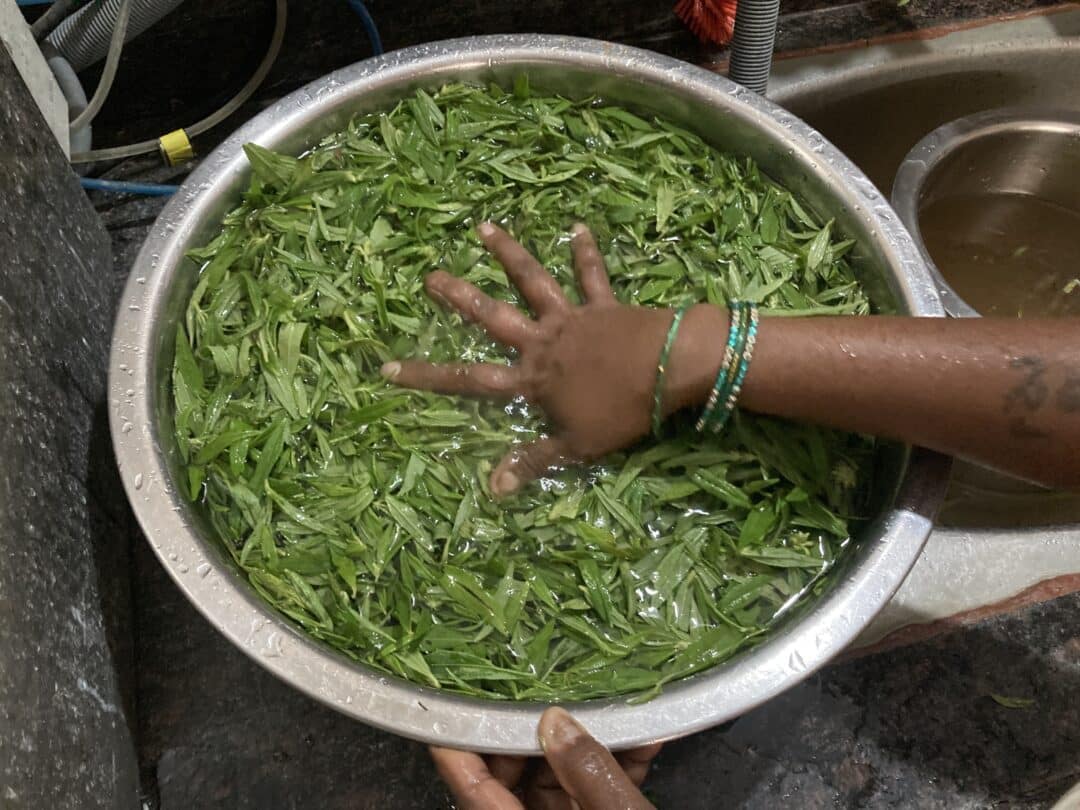Droṇa द्रोण is named after the great master of advanced military arts, Droṇācārya द्रोणाचार्य , who was exceptional at hitting his targets with his arrows.
Similarly, Droṇapuṣpī is an exceptional Ayurvedic herb to hit the target of many diseases, particularly those associated with pernicious hard āma (undigested toxic substances that are the root of most diseases).
Puṣpī is the feminine word for “flower”. The flowers are picked to offer to Ganesha in ceremony pūja.

GANESHA'S FAVORITE LEAFY GREEN
Many know about the famous grass that is associated Ganesh: Dūrvā (Cynodon dactylon), which is great for the lymph, urinary systems and kidneys.
But not enough people know about the leafy green vegetable associated with Gāṇeśa: Droṇapuṣpī (Leucas cephalotes).
Gāṇeśa consciousness connects us to “Guru”: that which removes darkness and ultimately the supreme guiding power of cosmic intelligence.
Gāṇeśa sustains and grounds us in the Muladhara or Root Chakra, so we can transform obstacles of insecurities, fear and emotional unsuitability (that are typically held in the root chakra) into opportunities for us to exercise the highest wisdom for all to prosper in health and harmony.
The celestial energy of Gāṇeśa and the Droṇapuṣpī plant are both associated with the earth element, grounding ourselves with Mother Earth so deeper healing can occur.
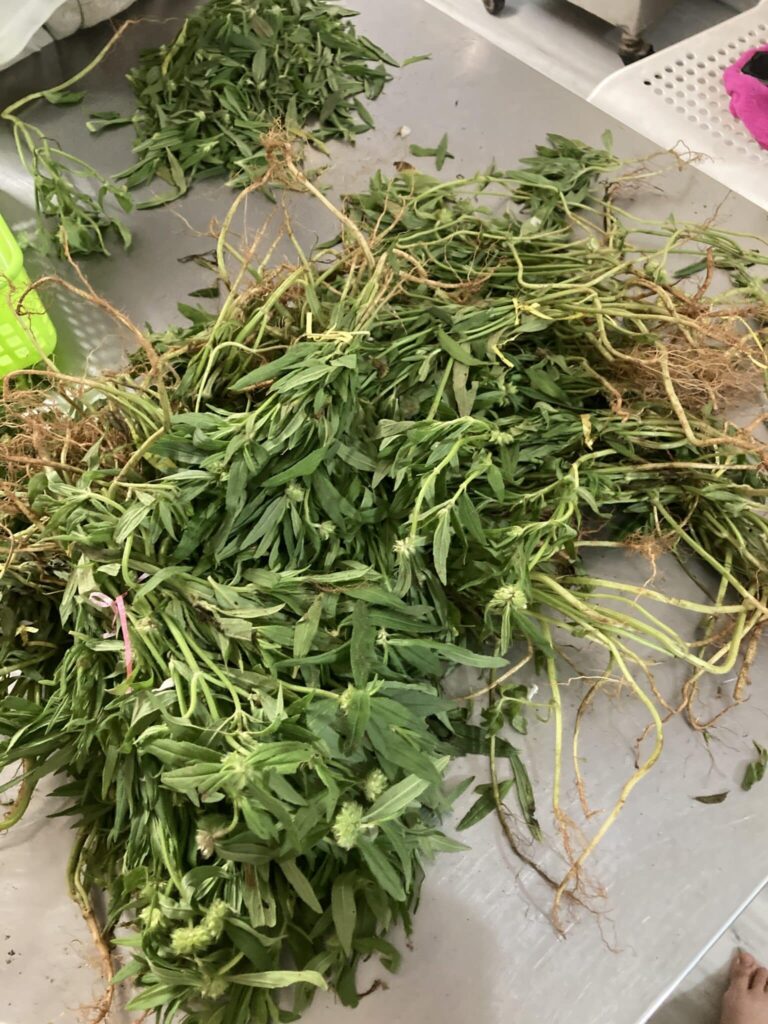
Once the individual is grounded, Droṇapuṣpī has the capacity to work on the liver, jaundice, parasites (krimi), viruses(2), asthma, oedema(1) and blockages in the heart.(2)
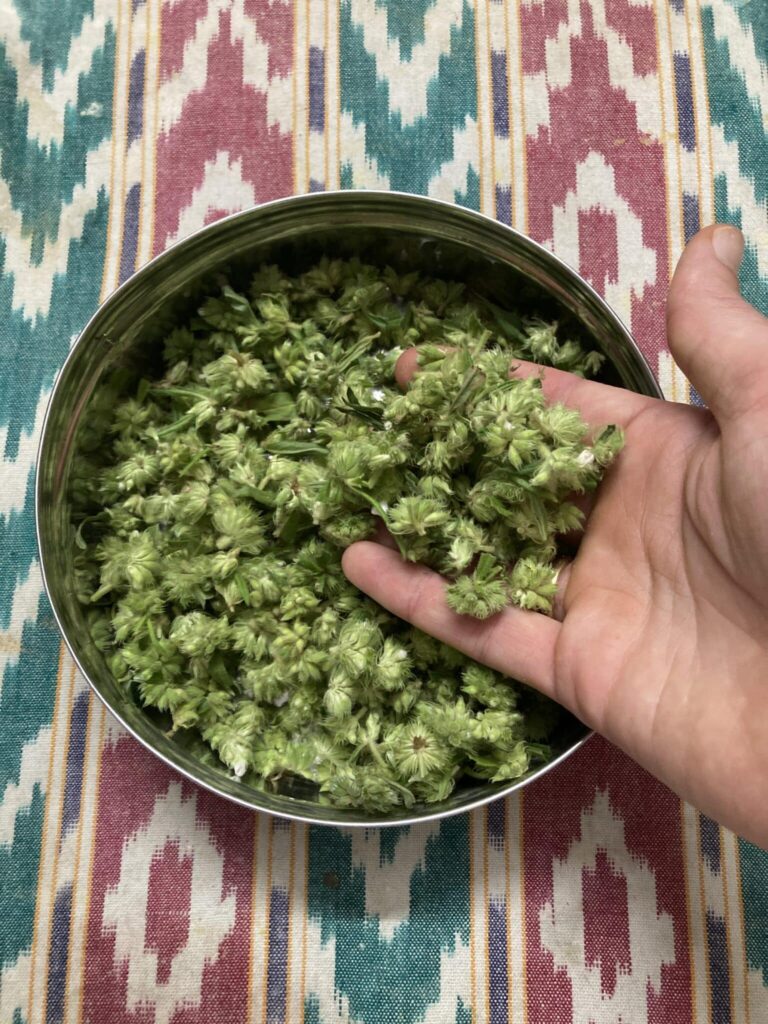
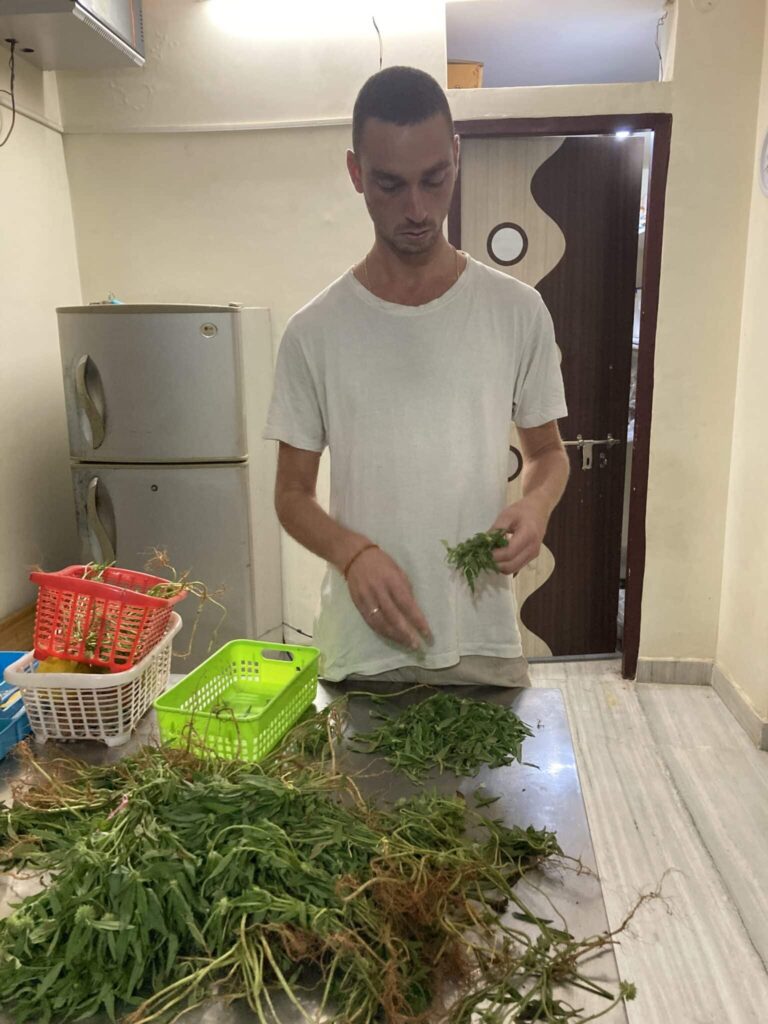
Interestingly, this herb is only available and “just right” for harvest during the time of Gāṇeśa Chatruthī (anniversary/birthday of Ganesh), where in some traditions it is even “compulsory” to eat this herb at this time.
This Vedic tradition is rooted in seasonal routine (ṛtucarya) because Gāṇeśa Chatruthī is during rainy season (varṣā ṛtu) when āma and viruses are more prevelant.
So, on Ganesha’s birthday, enjoy this herb cooked with tamarind as the first taste at lunch with some rice.
Shodhana saṃskāra (purification process) – Cook with raw tamarind.(2)
AYURVEDIC PROPERTIES (1)
Rasa (taste): madhura (sweet), katu (pungent)
Vīrya (potency): uṣṇa (heating)
Vipaka (post-digestive effect): madhura (sweet)
Doṣas: VP+ K-
Gunas: rūkśa (drying), tīkṣṇa (penetrating)
How do you celebrate Ganesh Caturthī? Comment 👇
Aum Śrī Vināyakaya namaḥ ॐ श्री विनायकय
ॐ गं गणपतये नमः
Happy गणेश चतुर्थी
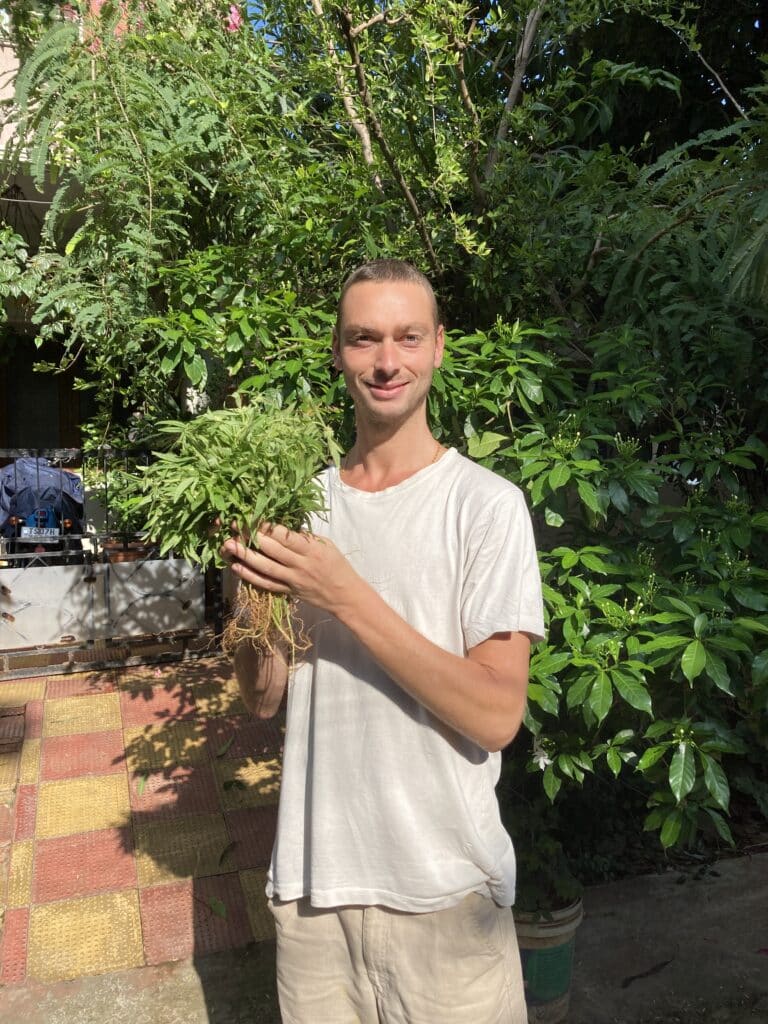
REFERENCES
1. Bhāvaprakāśa-Pūrvakhaṇḍa Guḍūcyādi Varga
2. Vaidya Padma Nayanī Raju

